It’s the last day of our cycling holiday in Germany. We’ve checked a few on-line sources and studied the cycling map and are driving to Altoberndorf a half an hour away so that we can cycle along the Neckar to Rottweil and Oberndorf. After an excellent breakfast at the Martinhof, Hotel including Spiegel ei, we are off.
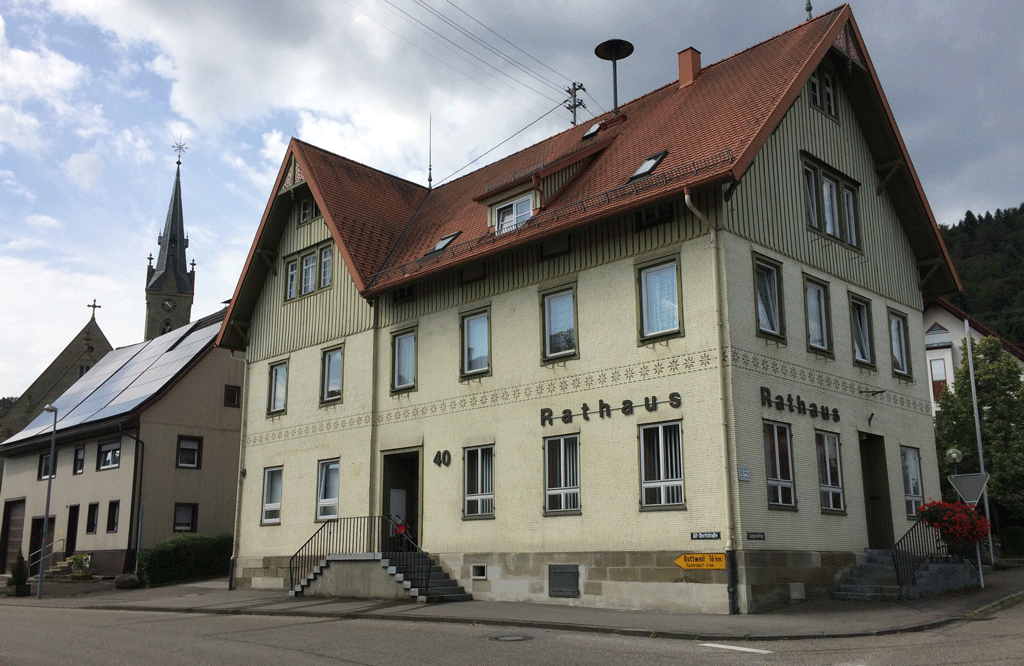
There are roadworks on the motorway (again!) so we take an earlier exit than planned along very small roads. Since Germany developed a free motorway system very early on, there are few major roads otherwise. Some of the time, we are driving along the recommended bike route.
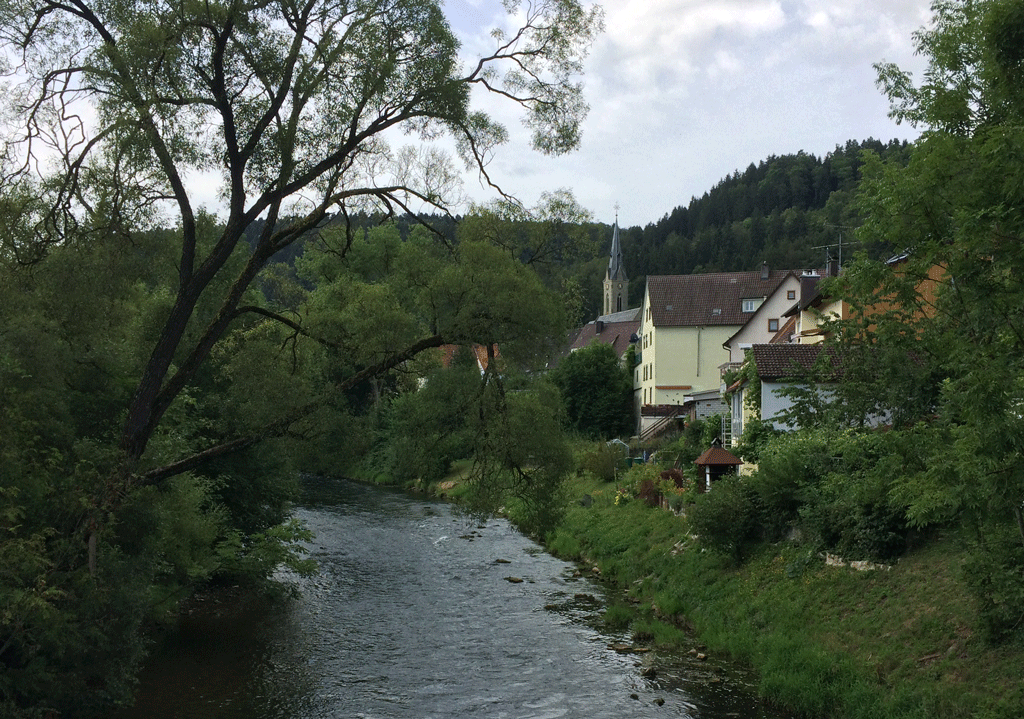
At Altoberndorf we park near the new rathaus. We are soon in pretty countryside, in a very narrow valley. We come to the first covered bridge of the day. On the other side there are two wooden sculptures – and a very devoted photographer. His wife is waiting patiently further on. I wonder how often she has to do so.
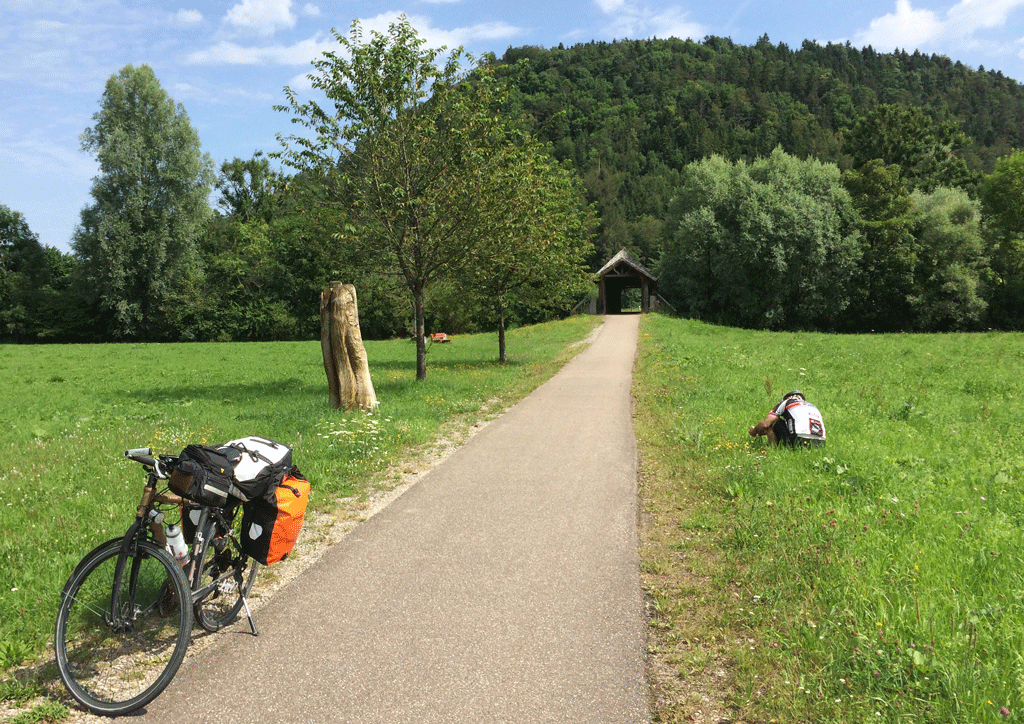
The route then runs along the railway line. So far, it’s quite flat but we know we have a steep climb before we get to Rottweil.
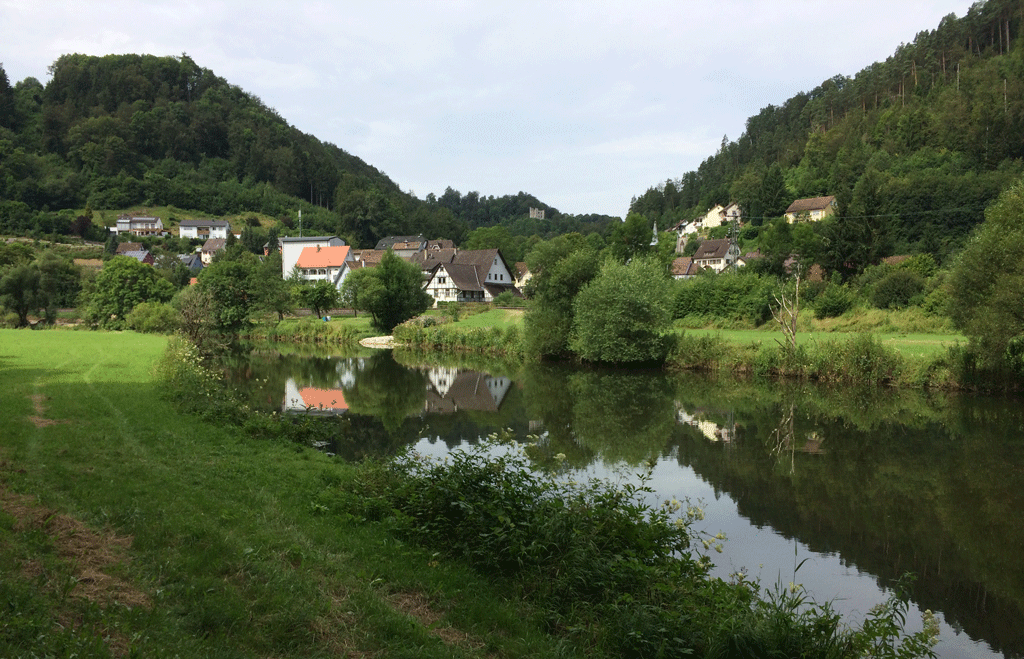
At Talhausen, it’s cappuccino time so we go into the village. Nothing. I suggest we try further up the hill because I can see a sign that looks promising. At the top, there is a bar with a view. The only problem is that it’s closed on Friday’s until 4.30 pm.
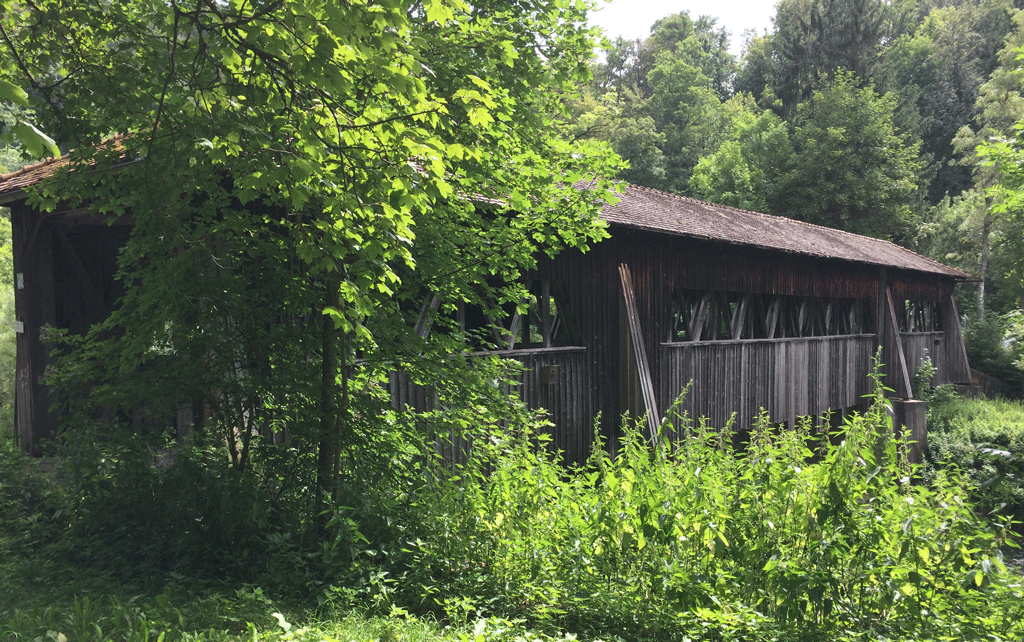
We go back down the hill to join the bike path again and soon come to our second covered bridge. We have seen these in other parts of Germany but are not sure of their purpose.
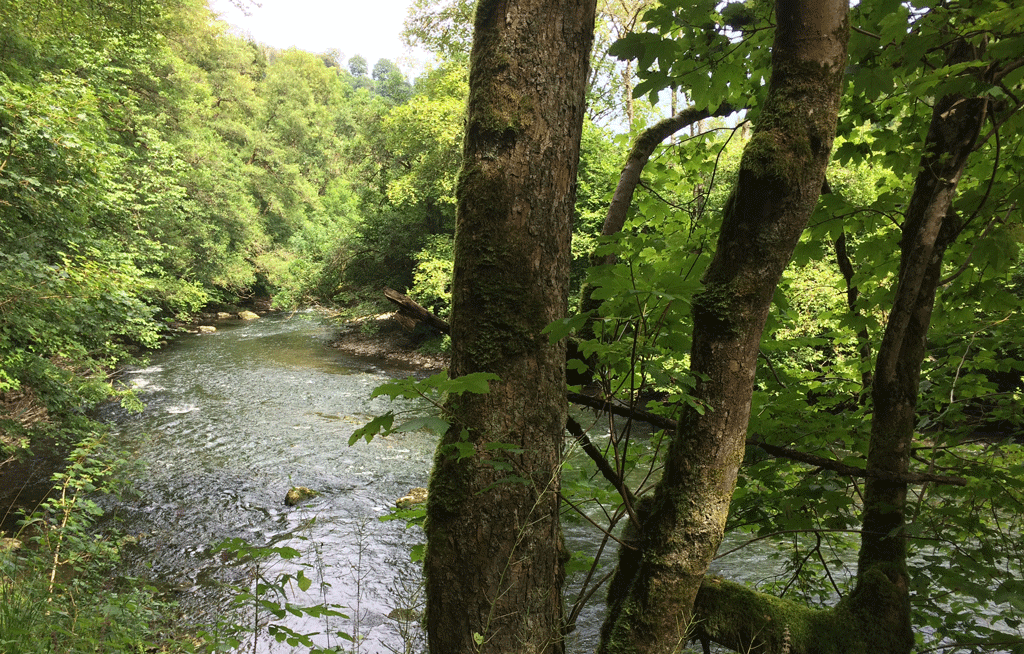
We follow the Neckar for a while until we pass under the motorway bridge. Not soon after that, we come to our long climb – 1.7 kilometers. I can see Jean Michel far ahead of me on the next bend. The road seems never-ending but once I find my pace I work my way steadily up. There is a wonderful view over to my left but I do not stop for photos or I’ll never make it to the top.
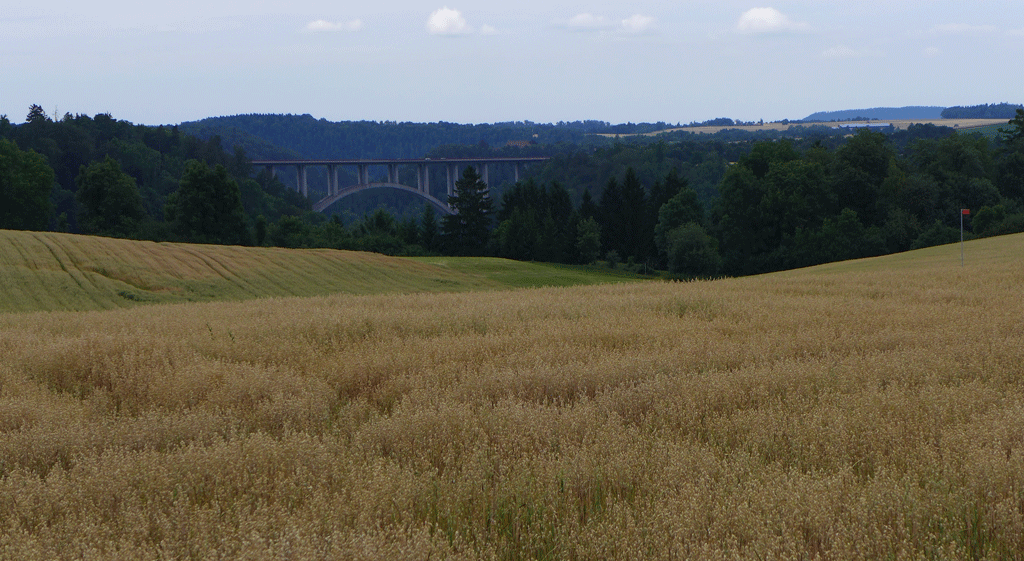
I think the end is in sight, but can’t see Jean Michel, so I assume the climb isn’t finished. When I am almost at the top, I see a group of four German cyclists resting in front of me. One is even lying down on the grass. I put on my best smile and say “Hallo” very energetically. I am a little disappointing that no one says “Bravo”. I later learn that only one of them cycled up the hill and she had an electric bike.
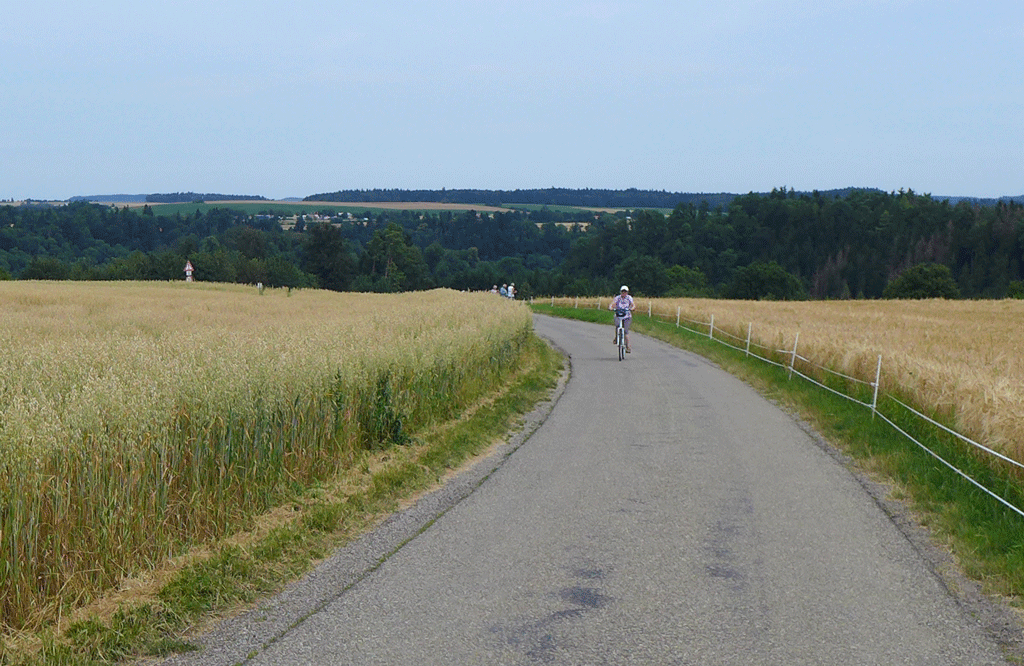
Just round the corner I see Jean Michel waiting for me. He takes a photo and congratulates me. This is most definitely the longest climb I’ve ever done. He says he expected me to walk at least part of the way. I’m very proud of myself.
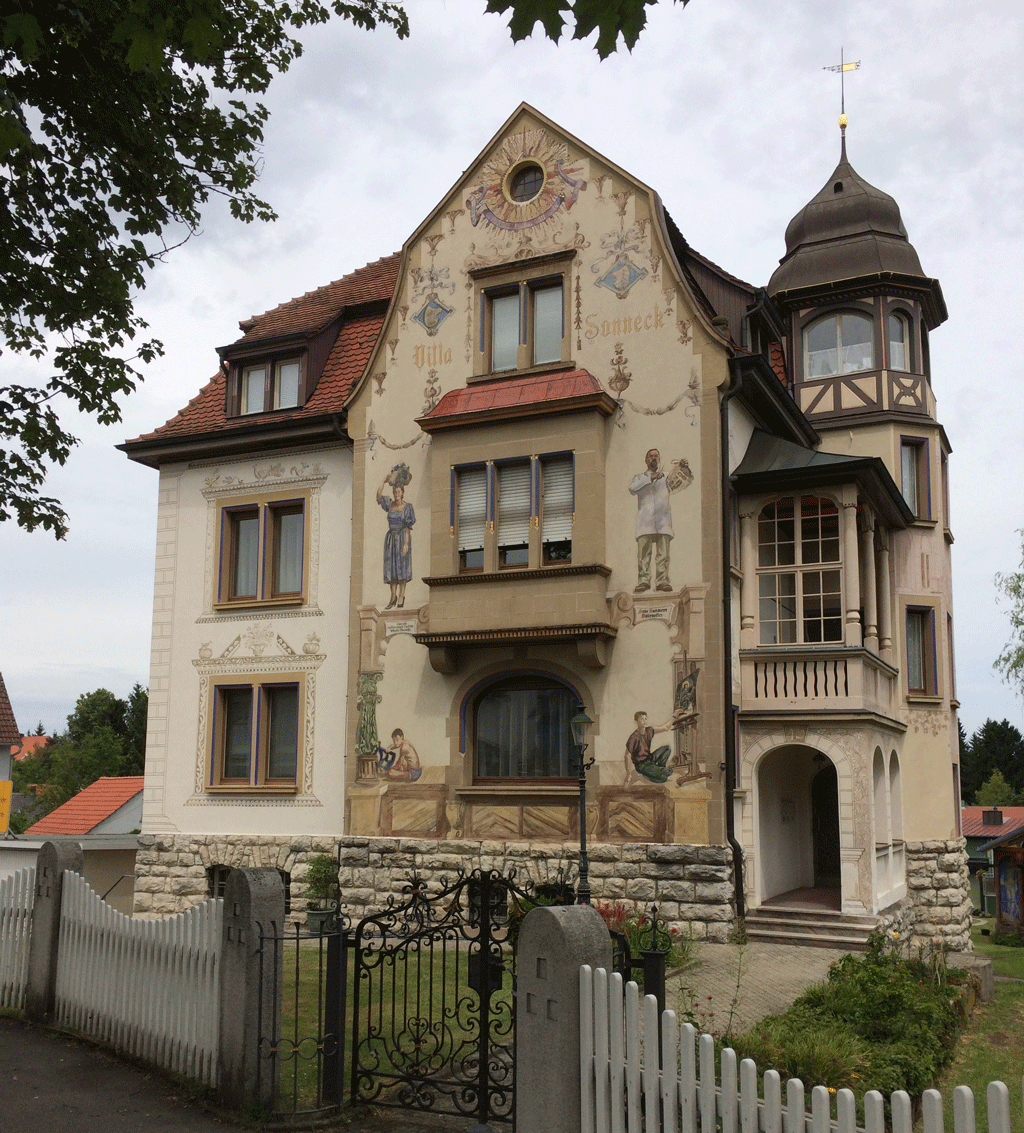
We cycle the last few kilometers into Rottweil and each time we freewheel I think of how hard it’s going to be after lunch – even with the 1.7 km descent to look forward to.
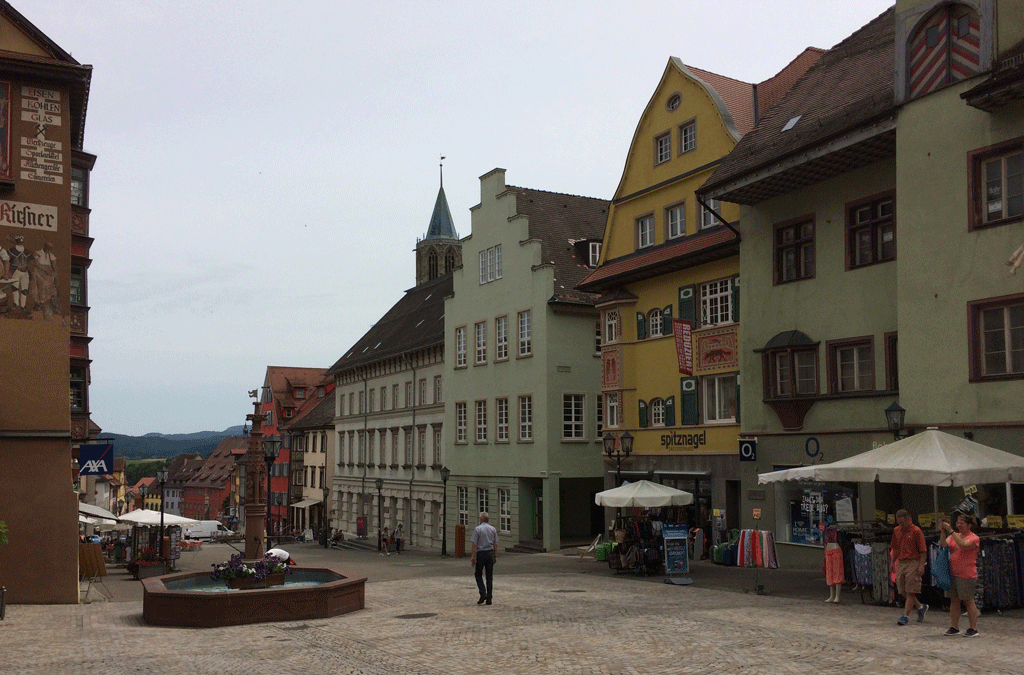
Rottweil is a delight to the eye with painted façades and decorated oriel windows everywhere. I am only sorry that the sky has been gradually filling with clouds.
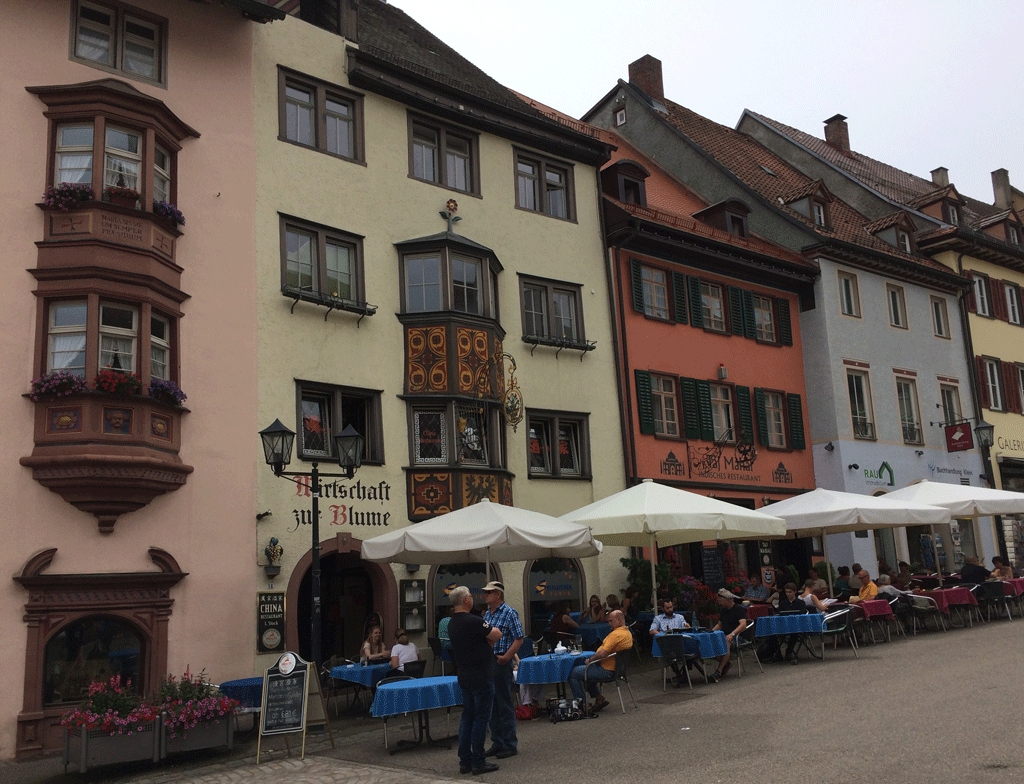
We call in at the tourist office and I ask whether there are restaurants other than the Greek, Chinese and Italian ones we can see on the main square. She says to go into the side streets.
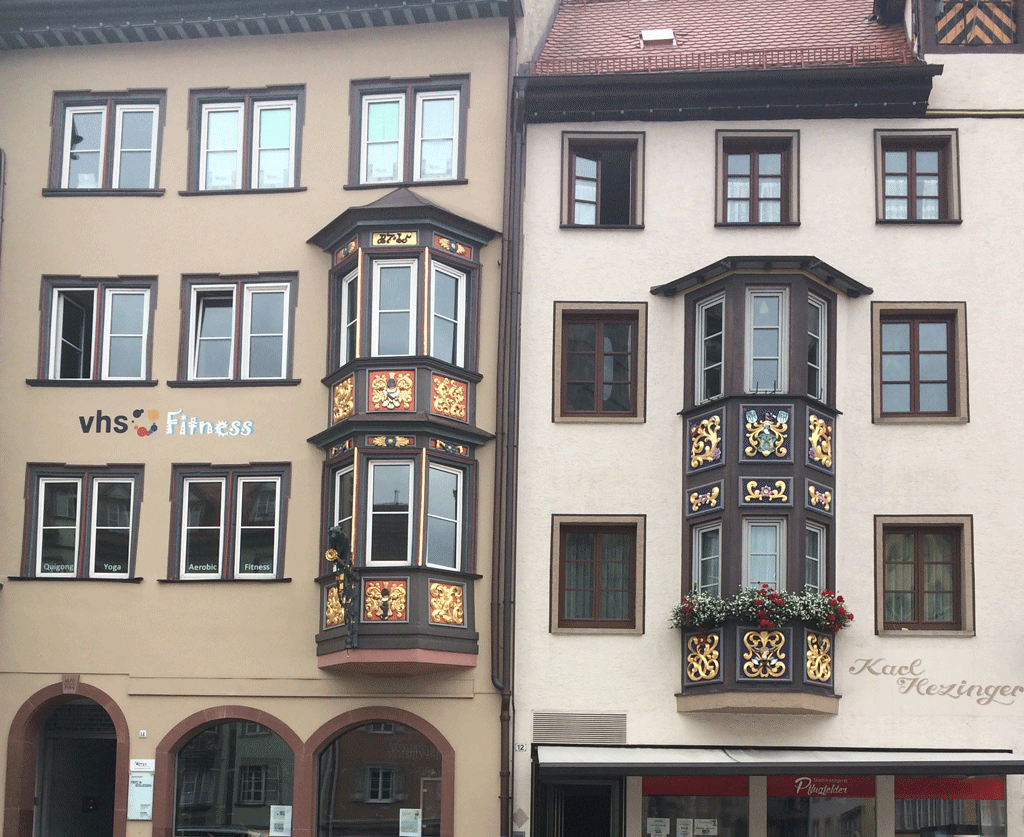
Jean Michel finds a terrace next to the church but is soon told that the kitchen is closed – it’s 1.15 pm.
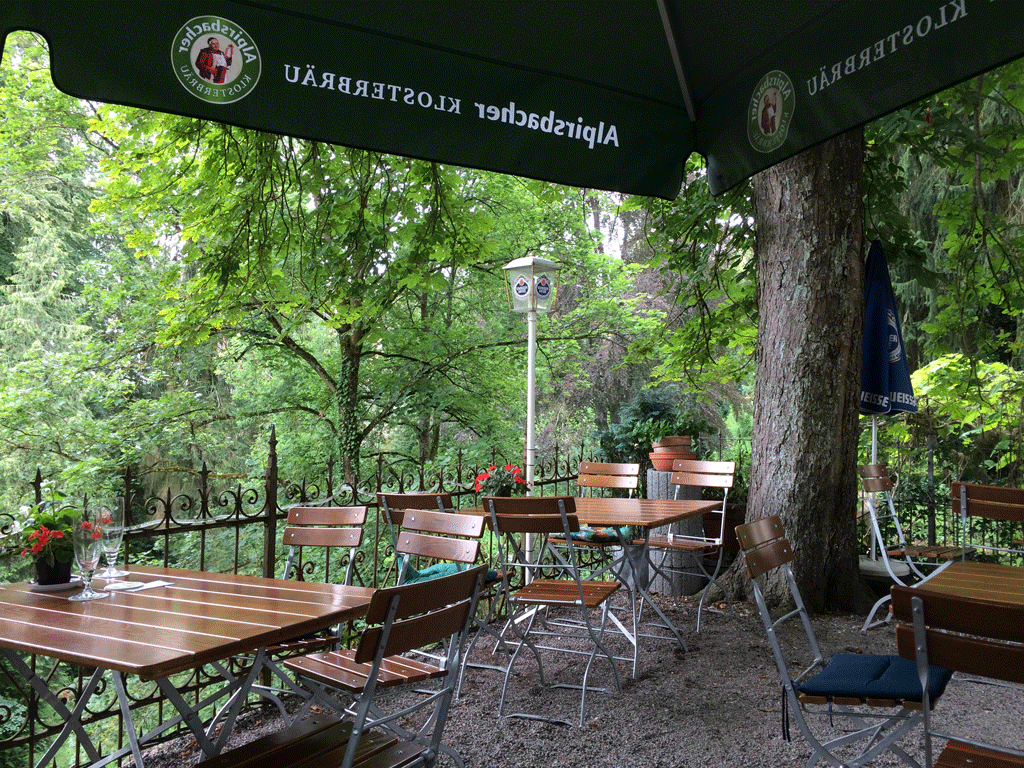
I suggest we go down to the bottom of the square and turn right as there is a park. Just before the bridge, we see a terrace but aren’t sure how to access it. I walk through a porch and out into a courtyard with a little tree-covered biergarten at the end. It’s an Italian restaurant as it turns out – but who cares? The setting is perfect. So is the food and the Italian wine.
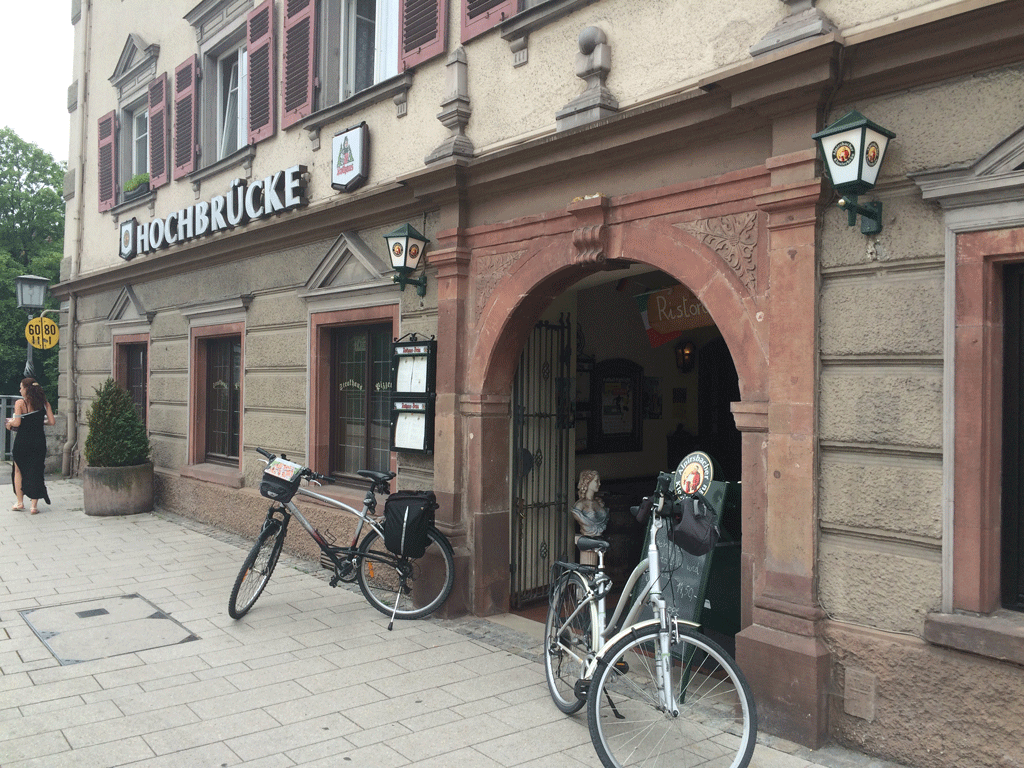
We see there is nothing in particular to visit in the town – we are not really interested in the Rottweiler dog museum – so go back to the main square to take some more photos.
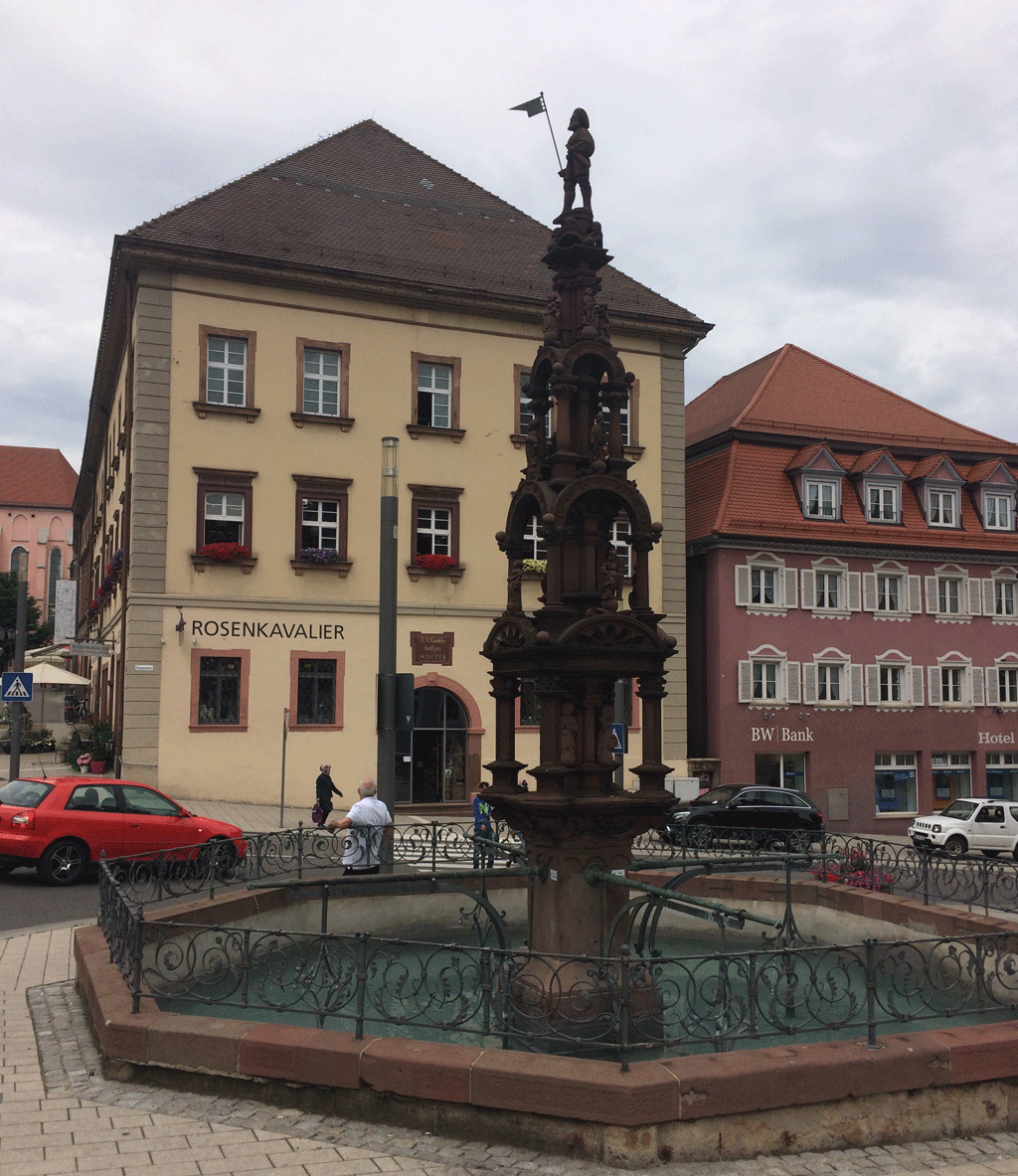
Jean Michel checks the map so we don’t have too many ups and downs before we get to our 1.7 km descent. We go past a tower-like construction we noticed before called Test turm. We later check it out on the Internet. The 246 metre high Tower of Light is a lift test tower whose construction began on 2nd October 2014.
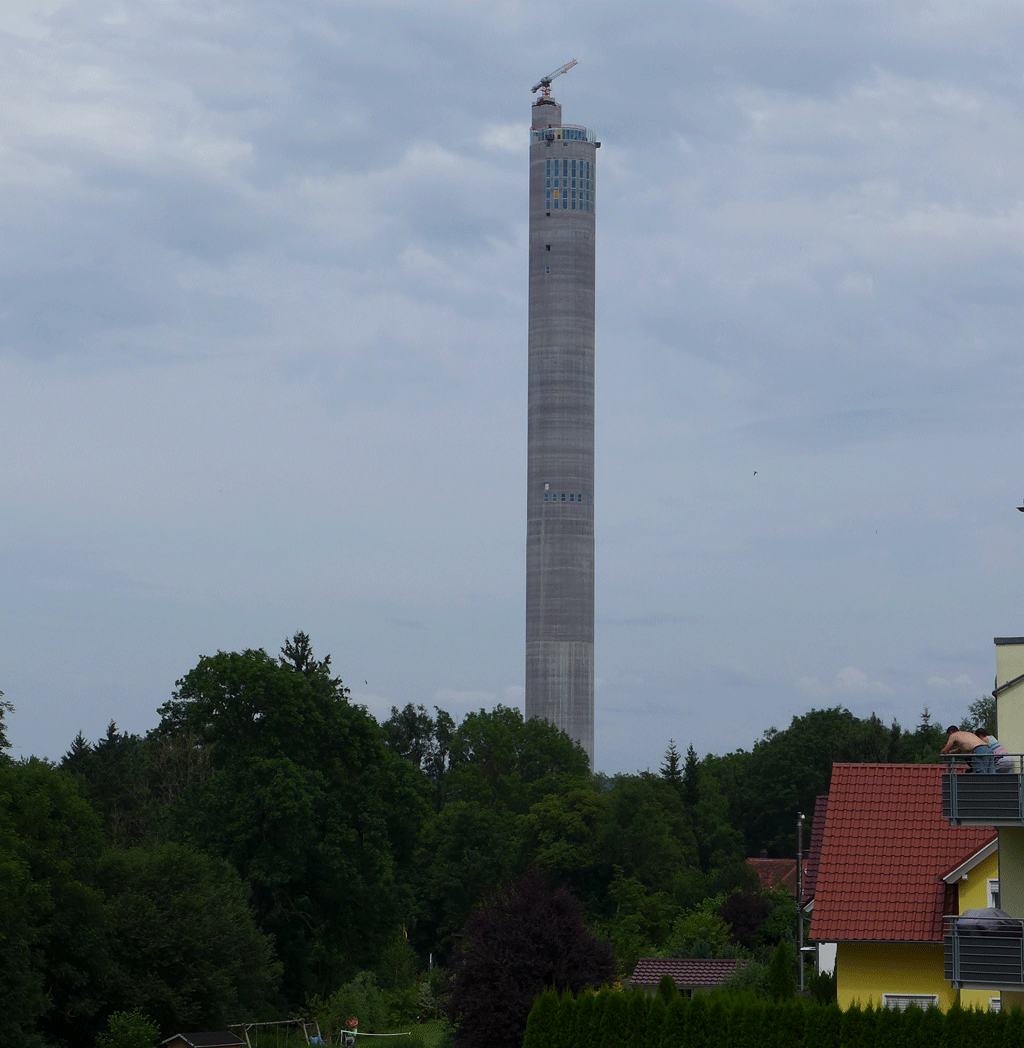
We arrive at the 1.7 km descent at 3.30 pm and this time, I can stop for photos! You can just see the motorway in the distance.
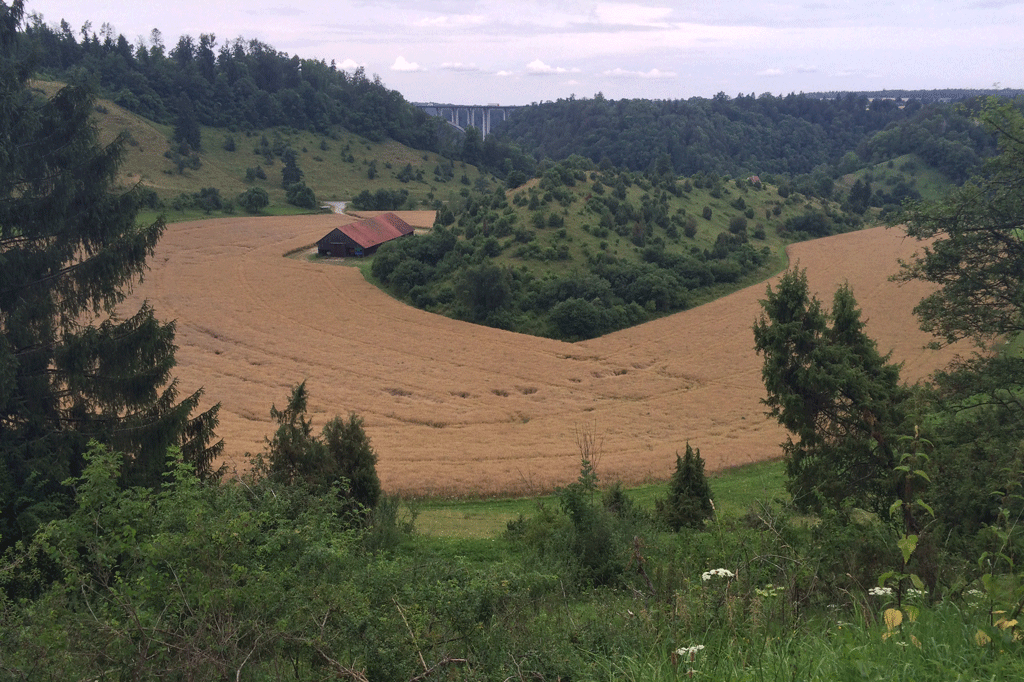
At the bottom we stop to fill our water bottles at a fountain provided by the local waterworks for cyclists and hikers. The water is nice and cold. We manage to keep it fairly cool with our Australian stubby coolers.
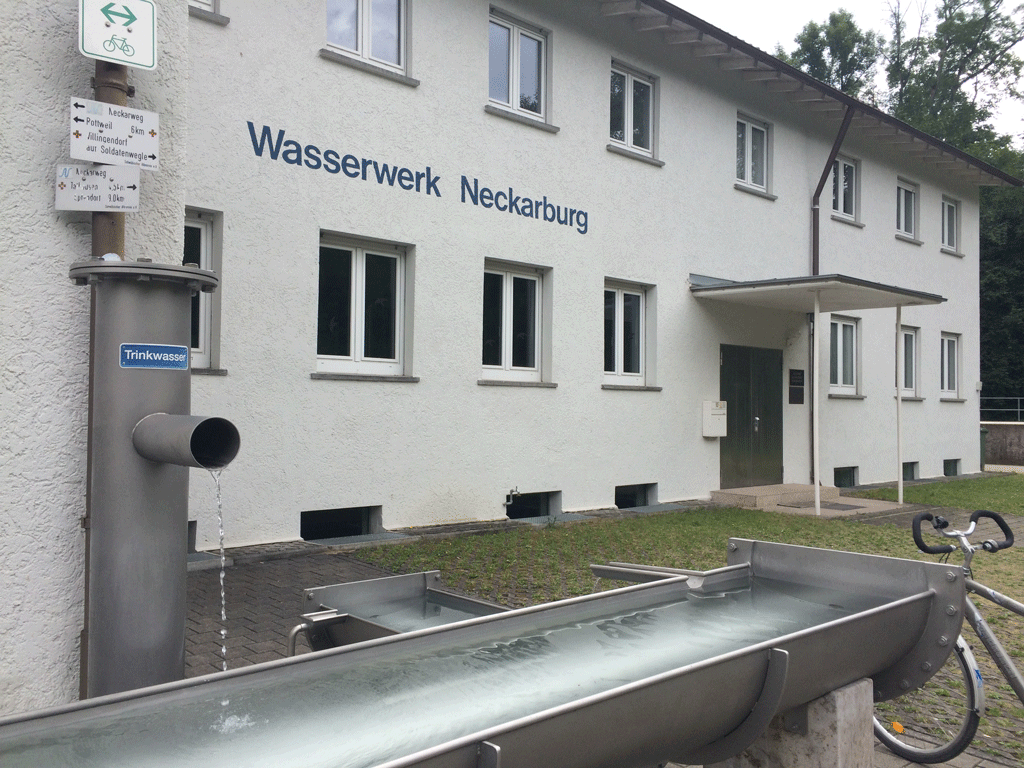
We ride past Altoberndorf and on to Oberdorf where we see our fourth covered bridge. There are riotous kids on rubber rafts floating along the river below.
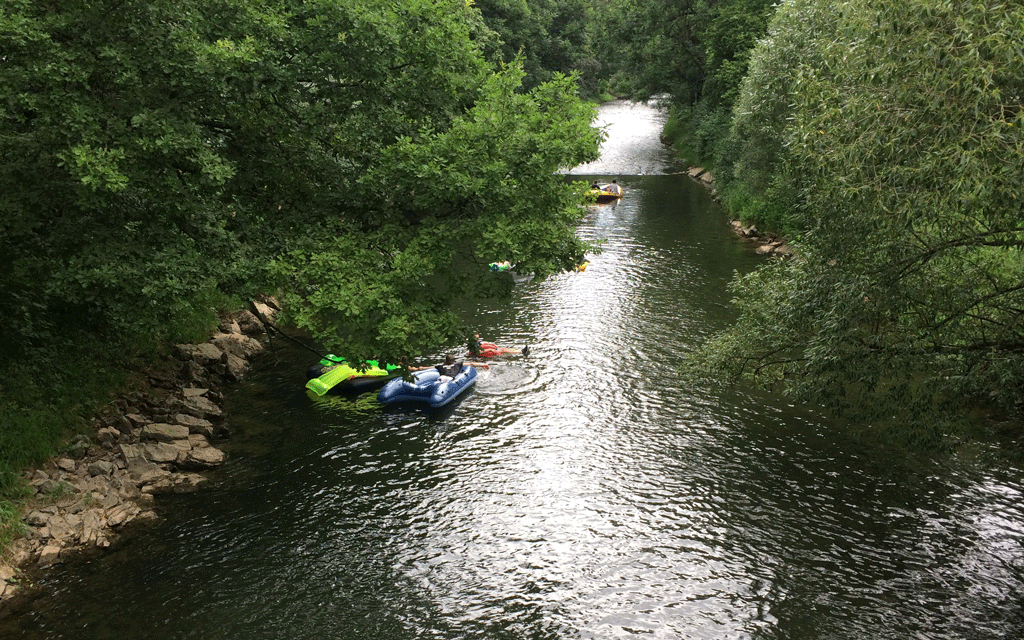
It looks as though the town is up on a hill. Oh dear. Our cycle path takes us onto a ramp that ends in a spiral. I’m walking this!
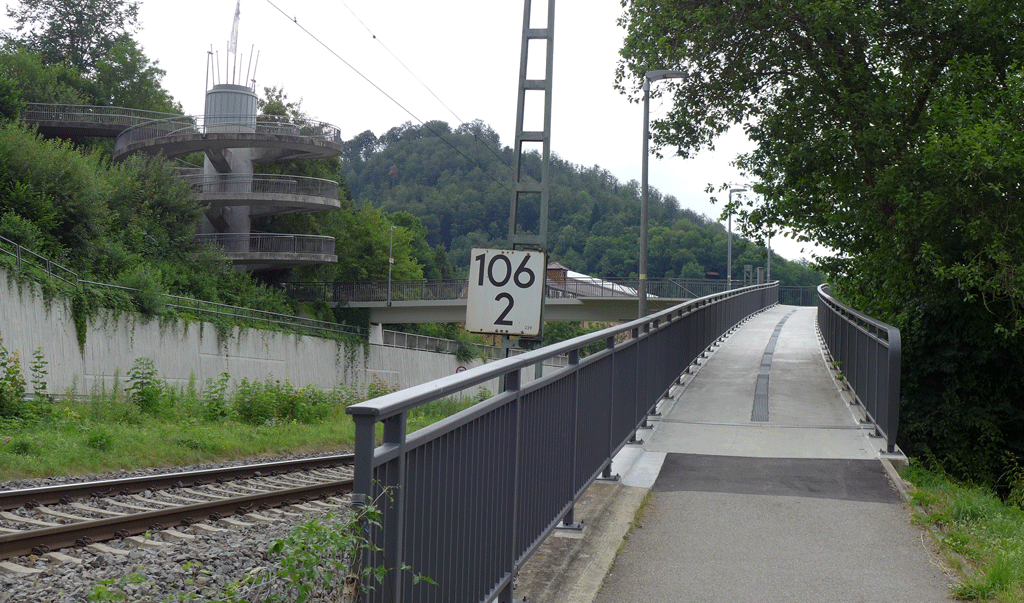
However, before we reach the spiral, there is a sign on the right directing us to the rathaus, Information Office and a church. It’s nearly 5 pm and no sign of life. I stay downstairs with the bikes while Jean Michel goes into the rathaus. I start looking at a guide book in French on the Black Forest that we bought in Rottweil. A man comes up and asks in English if I need help. I explain I’m waiting for my husband who is in the rathaus.
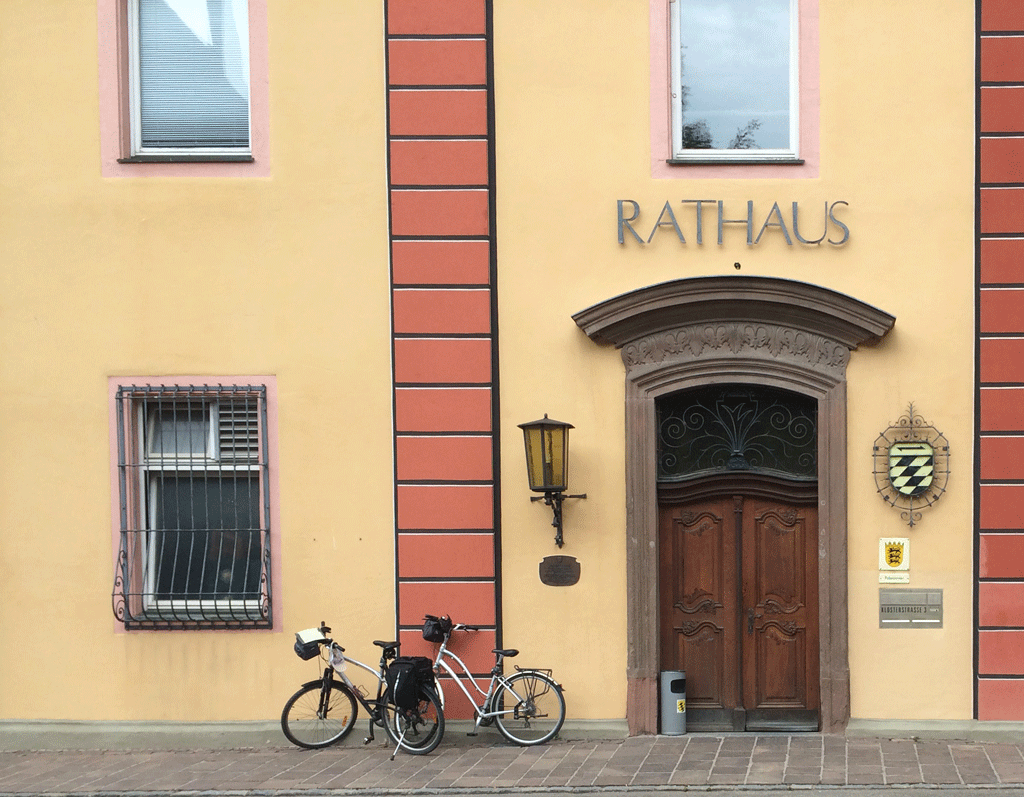
“Have you visited the church?” “No, not yet.” “It’s nearly 5 o’clock, it’s going to close soon. Come with me”. I follow him, leaving the bikes behind unattached and hoping Jean Michel will not worry when he doesn’t find me. “Where are you from?” he asks. “Well, I’m Australian, my husband is French and we live in France”, I explain. He then says a few words in French because he had noticed the book I was reading.
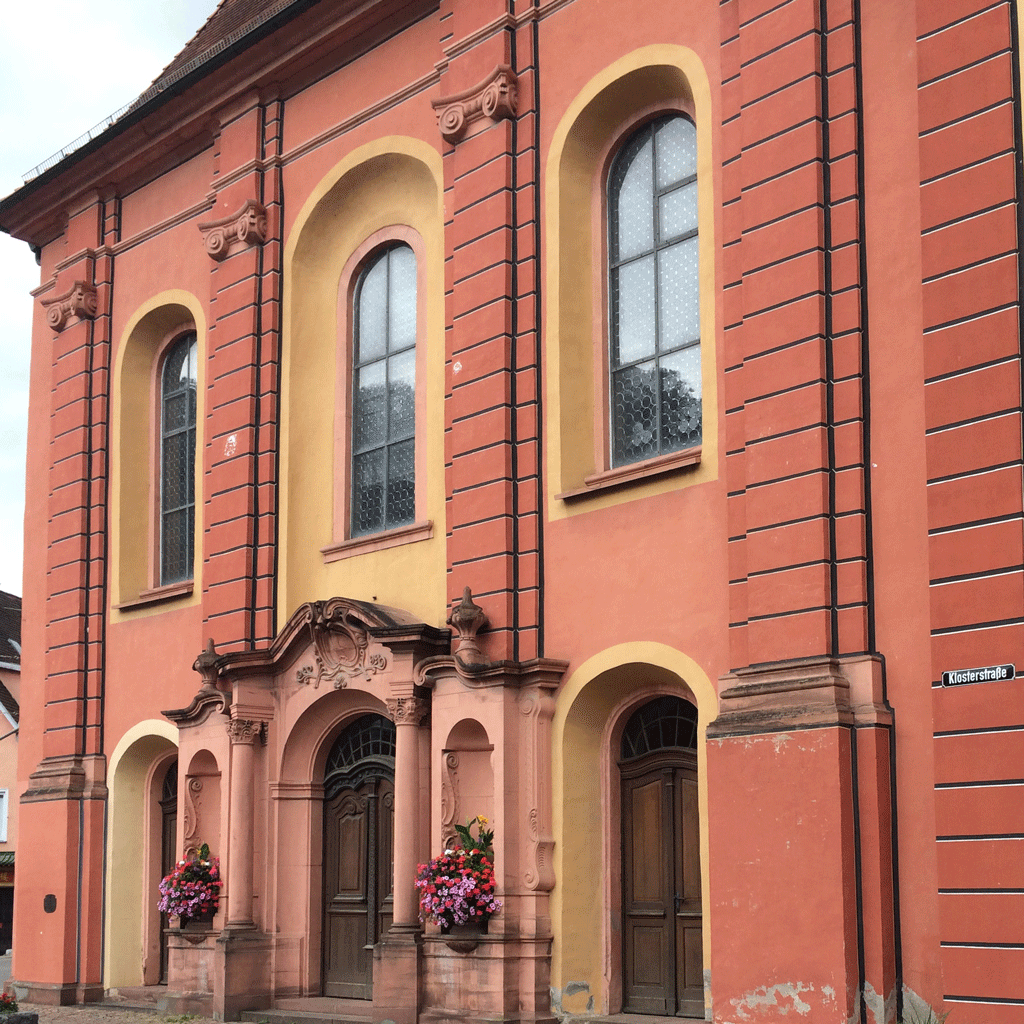
We can go into the church but only the narthex is open. The wrought iron gates leading into the nave are closed. “This is our town’s most famous place”, he says. “It’s a Christmas scene on the ceiling and a crucifixion at the end.” Jean Michel arrives at this point and I explain in French what’s going on. The man offers to find a key to get into the nave but we say we can see well enough from the narthex.
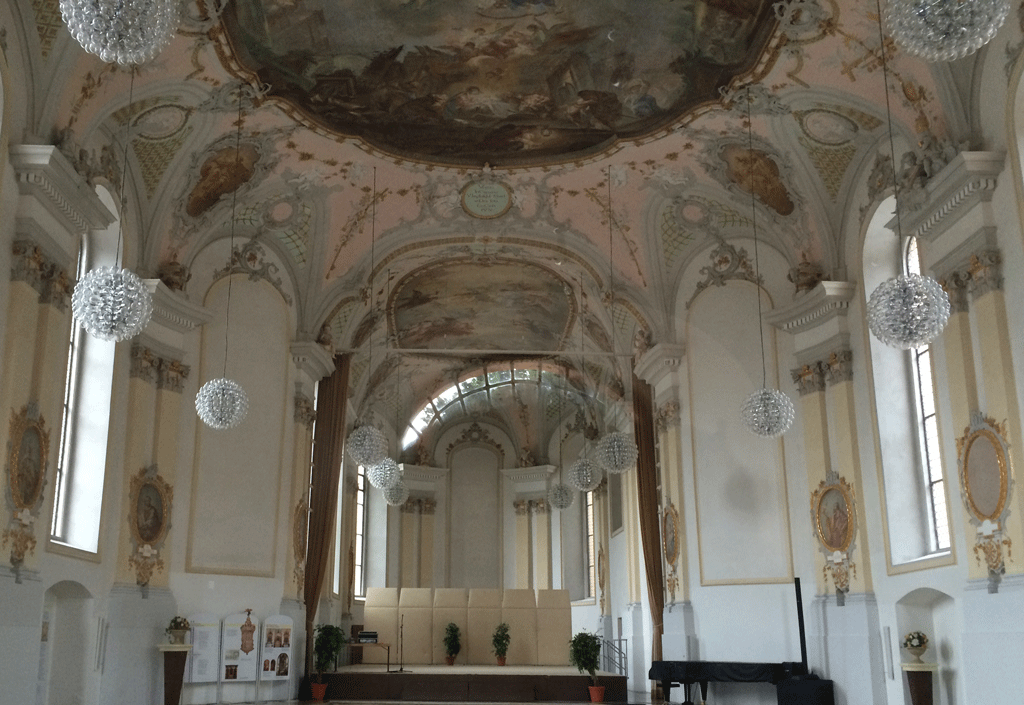
He then explains that the town is famous for its church and the manufacture of Mauser weapons. No wonder it was bombed during the war!
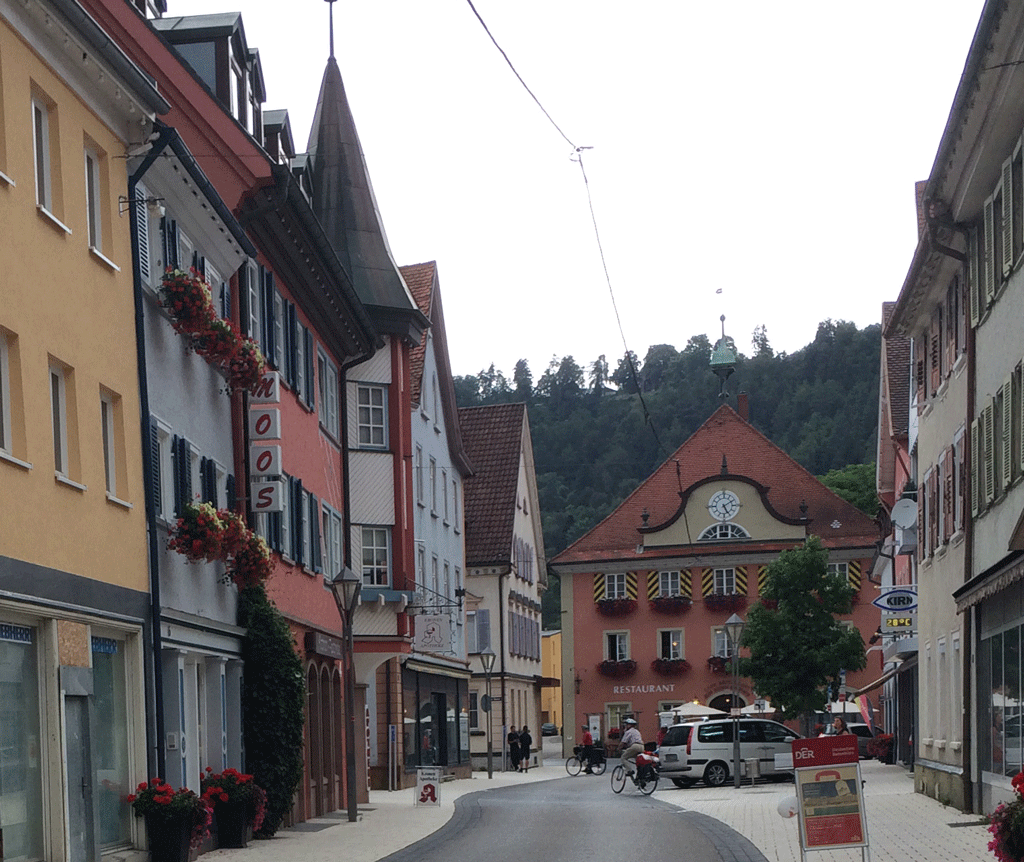
At my insistence we go up to the old part of the town although Jean Michel is not convinced there is anything up there. However, there are several pretty houses and, more importantly, an eis café. We choose our flavours (we know all the vocab now) and sit down on a nearby bench in a sort of kiosk to eat them. Two other people are sitting there as well and start asking us questions about our holiday, where we live, etc. This is probably the first time we’ve had a real conversation in Germany.
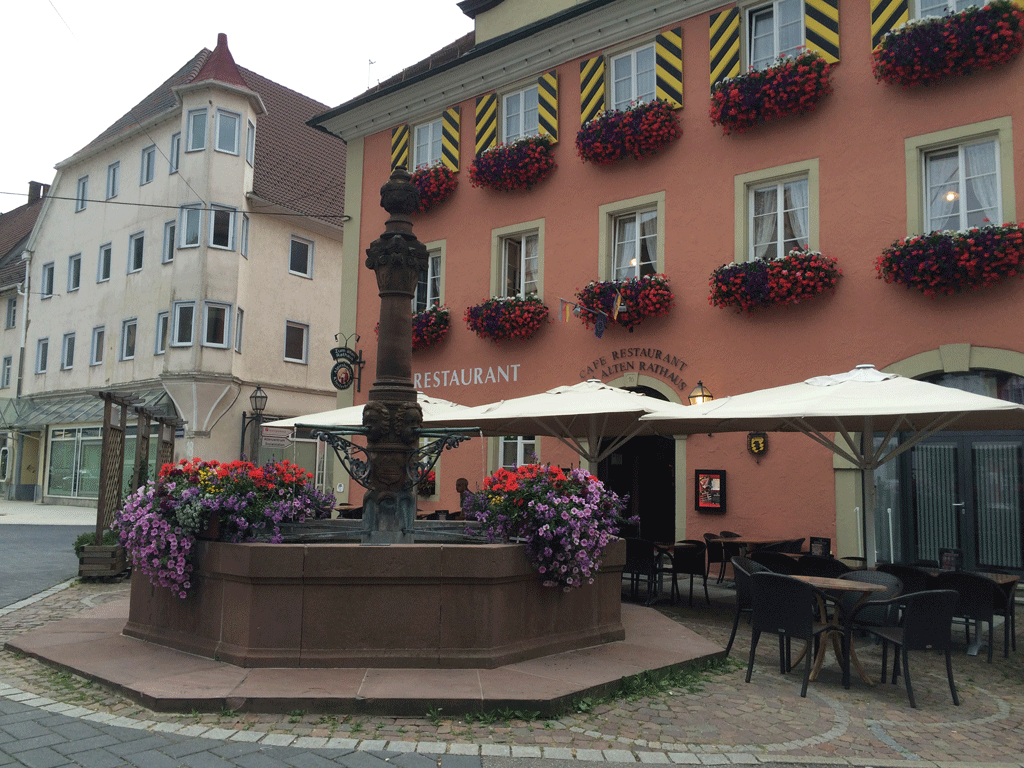
The sky is getting darker and darker and it’s also getting very windy. “Do you have rain clothes?” asks the lady. “Yes, we have our capes”, I reply. Thank goodness. We are just finishing our ice-creams when the first drops start to fall.
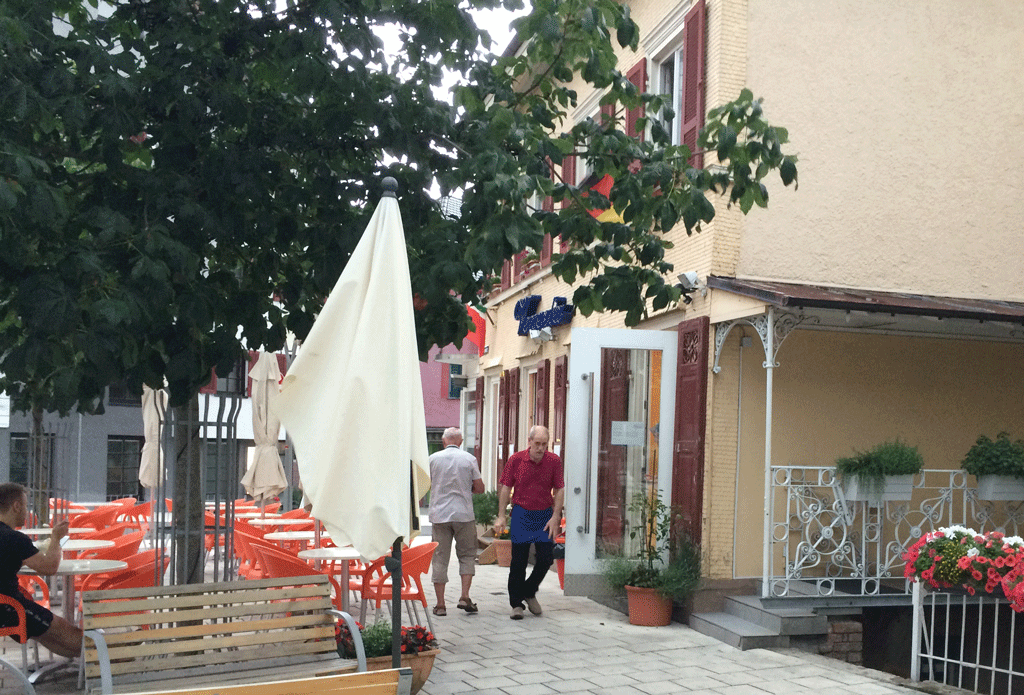
We hastily put our capes on (Jean Michel does not refuse this time) and head for the ramp. I walk my bike down as I’m afraid it might be slippery. By the time we leave the town, it’s absolutely pelting down and doesn’t look as though it will let up soon. Suddenly, we realise that we’ve gone too far and don’t know where we are.
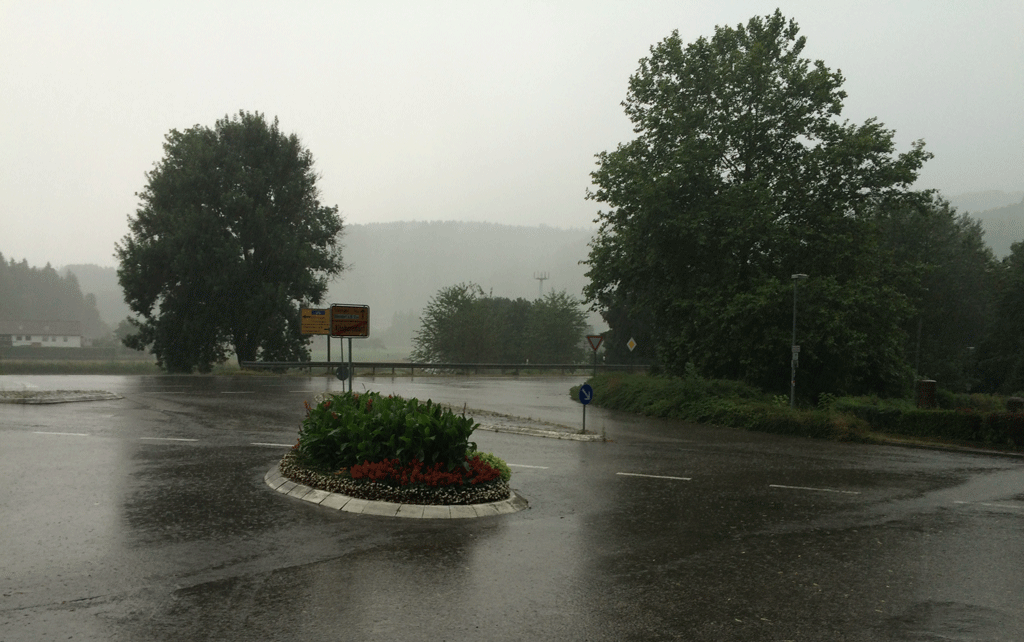
I see a bus shelter and we wait there for a bit. Jean Michel goes off to reconnoiter and eventually locates the underpass into Atloberndorf. that we missed It’s still raining heavily and the gutters are still flooded when we approach the car. I see a place where we can park the car while we put the bikes on without getting even wetter.
We are soaked from the thighs down and our sandals are swimming with water. Fortunately we have a suitcase of clean clothes in the car plus a second pair of sandals so are able to change before going home. It’s still raining when we leave. I make a mistake when entering the address in the Tom-Tom and we end up in Freundstadt. It takes another ¾ hour to get home.
Our cycling holiday in Germany is over and the weather seems to agree that it’s time to go back to Blois where the temperatures have improved considerably.
We have now cycled along the Danube, the Rhine, the Moselle, the Elb, the Romantic Road (the Tauber), the polders in Friesland, Lake Constance and the Neckar in Germany on four different occasions. The Danube and Lake Constance remain our favourites.





It sounds like you’ve enjoyed it. The covered bridges are a particular delight. That tower seems rather out of place.
Yes, the covered bridges are lovely and I agree about the tower.
Having never thought about it, it had never occurred to me that Rottweilers came from a place called Rottweil, which until your post, I had never heard of.
That photographer is me 🙂 (except that I am expected to keep up — nobody waits for me).
I’m interested that the crop you are cycling through is oats. You don’t see oats much here.
Did you find out what the tower is for? What is it testing?
I love the water trough, and so immaculately clean!
Any idea what the odd and out of place stripey yellow and black shutters in Obendorf are about?
No, I didn’t know that Rottweilers were from Rottweil either :).
JM is the one who takes ages with photos. I shout out “Photo!” and he usually stops, comes back, has a look, takes the cap of his lens lens, fiddles around with goodness knows what, takes the photo and puts the lens cap back on. Meanwhile, I have already taken my photo with my trusty iPhone and am waiting patiently :).
You often see oats in Germany and very rarely see animals in the open, even in summer.
It’s a tower for testing lifts (ascenseurs). I guess my paragraph isn’t clear enough.
We loved the water trough too.
Stripey something/black shutters are quite common in Germany. I don’t know if there is any significance. http://www.aussieinfrance.com/2013/06/cycling-on-the-danube-in-germany-binzwangen-to-mengen-including-zwiefalten/. I cannot find any information in English or French about Obendorf, not even the name of the church!
I’m sad that this is only the first real conversation you’ve had in Germany!
I found the name but it is in German. Augustiner Klosterkirche
Here is a link: http://www.oberndorf.de/,Lde/Startseite/Freizeit/klosterkirche.html
Thank you Lorri! It is not easy to talk to the locals when you don’t speak their native tongue. It also depends on the type of accommodation. When we cycled along the Danube, we met more people.